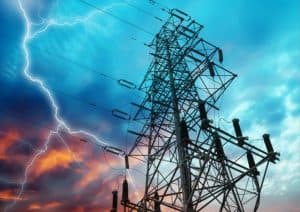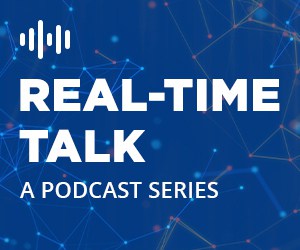
Leveraging AMI data enables utility companies and power providers to meet the demand of their customers quickly, efficiently, and accurately,
COVID-19 stay-at-home mandates and the shift toward a remote-work lifestyle have led thousands of office and municipal buildings across the country to remain closed for the majority of 2020. While some businesses started to reopen late-summer 2020, spikes in cases in November and December once again prompted stricter community restrictions and business closures. Real-time data from Advanced Metering Infrastructure (AMI) can help.
The COVID-19 pandemic has led to significant fluctuations in commercial power consumption. Although the end is finally in sight, the impact of COVID-19 will affect the way we live and work moving forward. With more citizens staying at home, potentially long-term, it is more important than ever for utility providers to adjust operations to meet an offsetting increase in residential power demand.
See also: NIST Smart Grid Framework Update Focus is Interoperability
How does the shift toward a remote workforce affect power consumption and demand?
During a typical workday before the COVID-19 pandemic, businesses and homes begin to turn the lights on and consume power around 5 a.m. With stay-in-place policies, more people started working from home, eliminating their daily commute, with some using that time to start their morning routines later. This causes the aggregate system load of utilities to begin ramping up later in the morning. Not only does this result in utility providers having to adjust power supply operations to meet a shift in demand, but it can also lead to a shift in consumers’ peak load hours.
Peak load hours are the points in the day at which a city and its residents are consuming the most electrical power. According to energy usage data prior to broad stay-at-home policies and COVID-19, peak load hours tended to be late afternoon when the combination of residential and non-residential air conditioning loads were running at maximum power to cool down homes and workplaces. As a result of the pandemic, commercial buildings that are largely unoccupied have lower air conditioning loads, leading to a shift in peak load hours to earlier in the day as residential homes cool throughout the day.
As utility providers produce more power during these peak load hours, there is typically a higher billing rate associated with power consumption during these peak hours. This could result in higher than expected end-of-month energy bills for consumers working from home.
How do utility providers monitor power consumption?
AMI, featuring technologies like smart meters and distributed intelligence (DI), helps utility providers more accurately measure how much and when energy is consumed. Analysis of these data enables more accurate short-run forecasts as well as the long-run energy usage by day and time of day. This helps to ensure there is sufficient generation and transmission & distribution infrastructure to meet demand.
In addition, DI can provide deeper insights on grid edge transactions such as solar power generation and distributed generation. This enables utilities to track power generated by consumers that have installed solar panels on their homes or businesses to offset electricity costs. These consumers can sell excess solar power to other consumers to reduce the strain on power plants and the electricity grid.
Before DI and AMI, utility providers were limited to measuring power consumption with a once per month snapshot. Monthly data allows utilities to recognize broader trends in how seasonal changes impact power consumption throughout the year (e.g., HVAC system use), but the once-monthly snapshot does not provide insights to daily and within-day patterns of energy usage.
The stay-in-place policies issued to forestall the spread of COVID-19 have driven unprecedented and very unpredictable shifts in power consumption. During the pandemic, most utility providers cannot afford to wait until weeks down the line or the end of the month to retroactively review any unpredicted shifts in power consumption. Power plants need real-time demand information to determine how to adjust power output and operations to meet dynamic changes in consumer and commercial demands.
AMI-enabled smart meter data allows utility providers to rapidly analyze evolving load patterns across customer classes, allowing them to quickly pivot operations to avoid power outages, overconsumption, and more. Smart meters measure energy usage in hourly or sub-hourly increments to help providers better understand how the pandemic and stay-at-home mandates have affected their base load power consumption.
How can utility providers leverage post-COVID-19 AMI data?
Currently, many utility providers offer demand response programs to commercial and residential customers. With demand response programs, customers are incented to reduce energy consumption during peak load hours. This helps utility providers control demand on the electric grid to avoid an overload in power usage.
AMI data is becoming increasingly important to enhance demand response programs. Post COVID-19 AMI data can be used to show how energy usage patterns are evolving across customer classes as business operations return more to normal. This information can then be used by power companies to shift their demand response programs to reduce the evolving peak load hours. As a result, power companies can offset excessive usage during peak load hours while also ensuring that power is available to sustain critical city-wide operations during peak load hours.
On a longer-term scale, utilities can compare pre- and post-COVID-19 AMI data to predict aggregate load patterns as economies are reopened. Further, by combining AMI data with external data surrounding various municipalities’ plans to roll back stay-at-home measures, utility providers can predict when they should ramp back up on power production to meet the rising demand as citizens return to the workforce and their offices.
At-home energy usage has changed dramatically since COVID-19 caused communities across the U.S. and the world to alter business operations, triggering a significant increase in residential load demand and an equivalent or greater decrease in commercial demand. Leveraging AMI data enables utility companies and power providers to meet the demand of their customers quickly, efficiently and accurately, while also gaining insights to help them prepare for what’s to come.





























